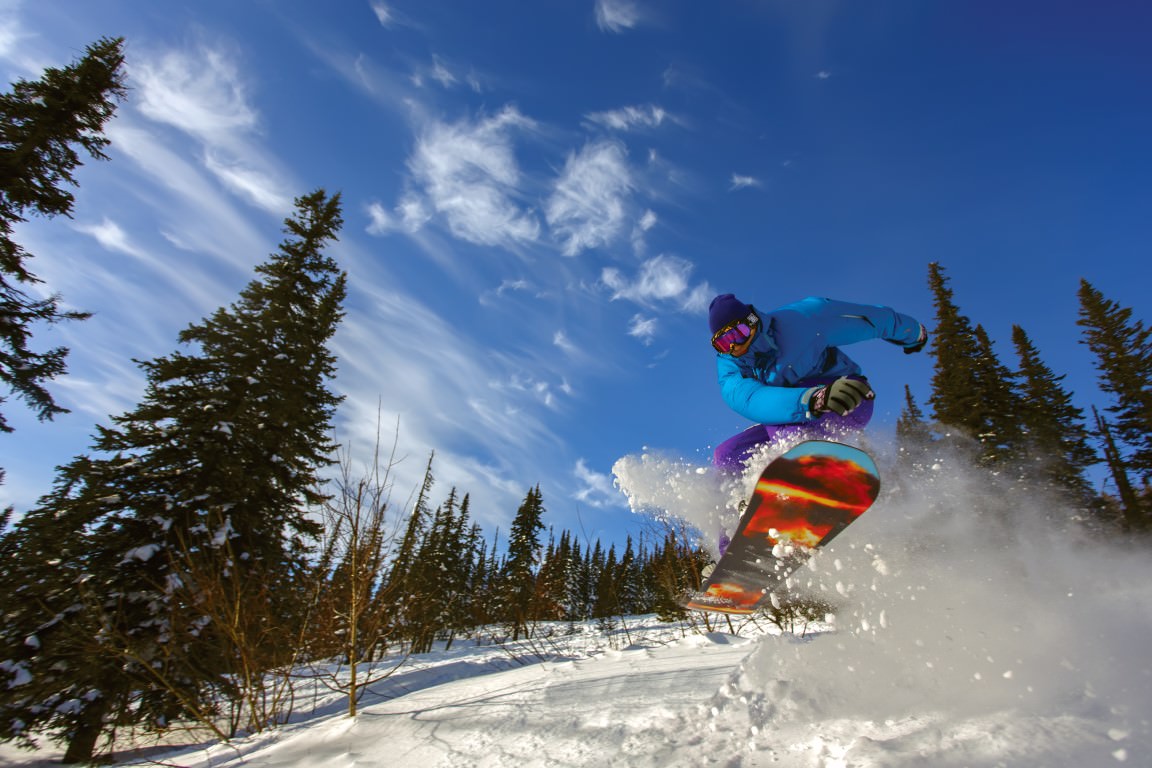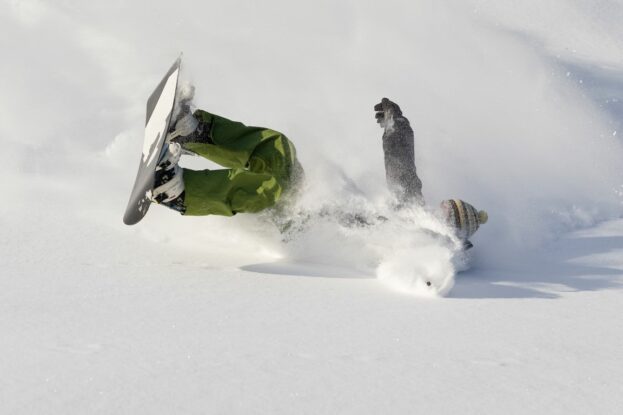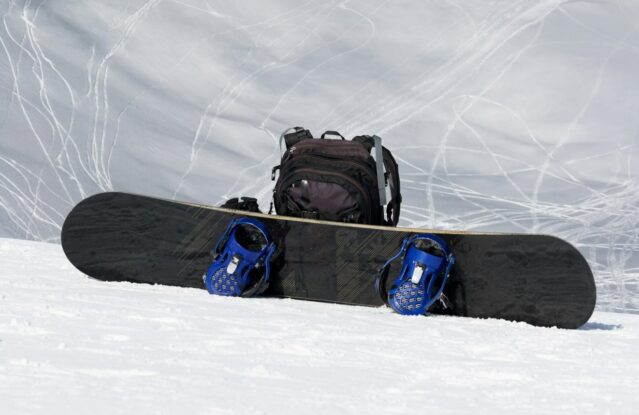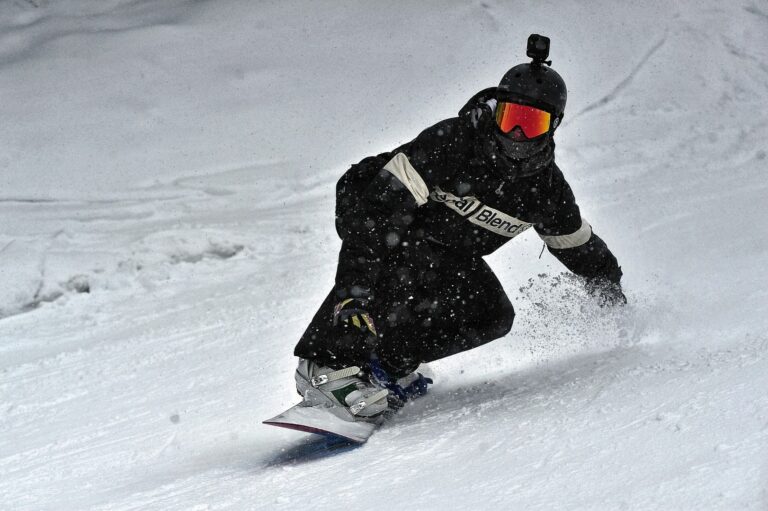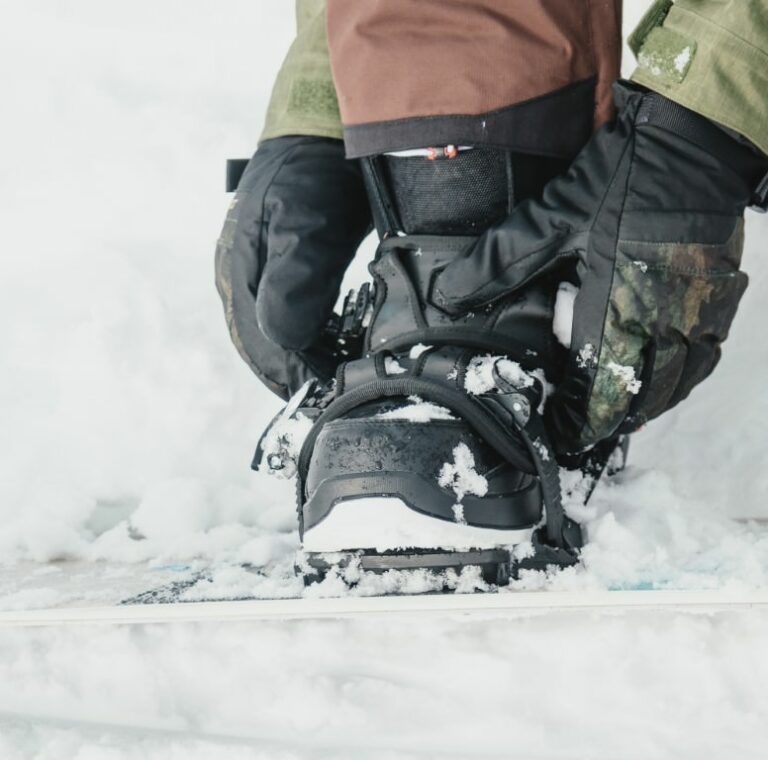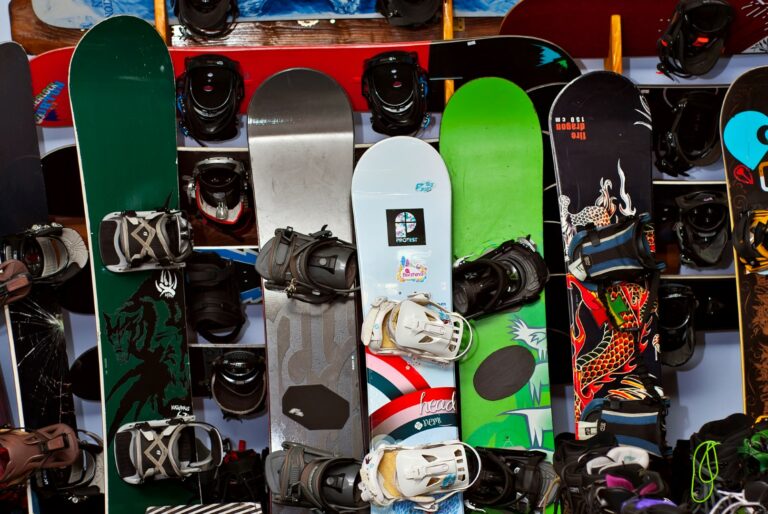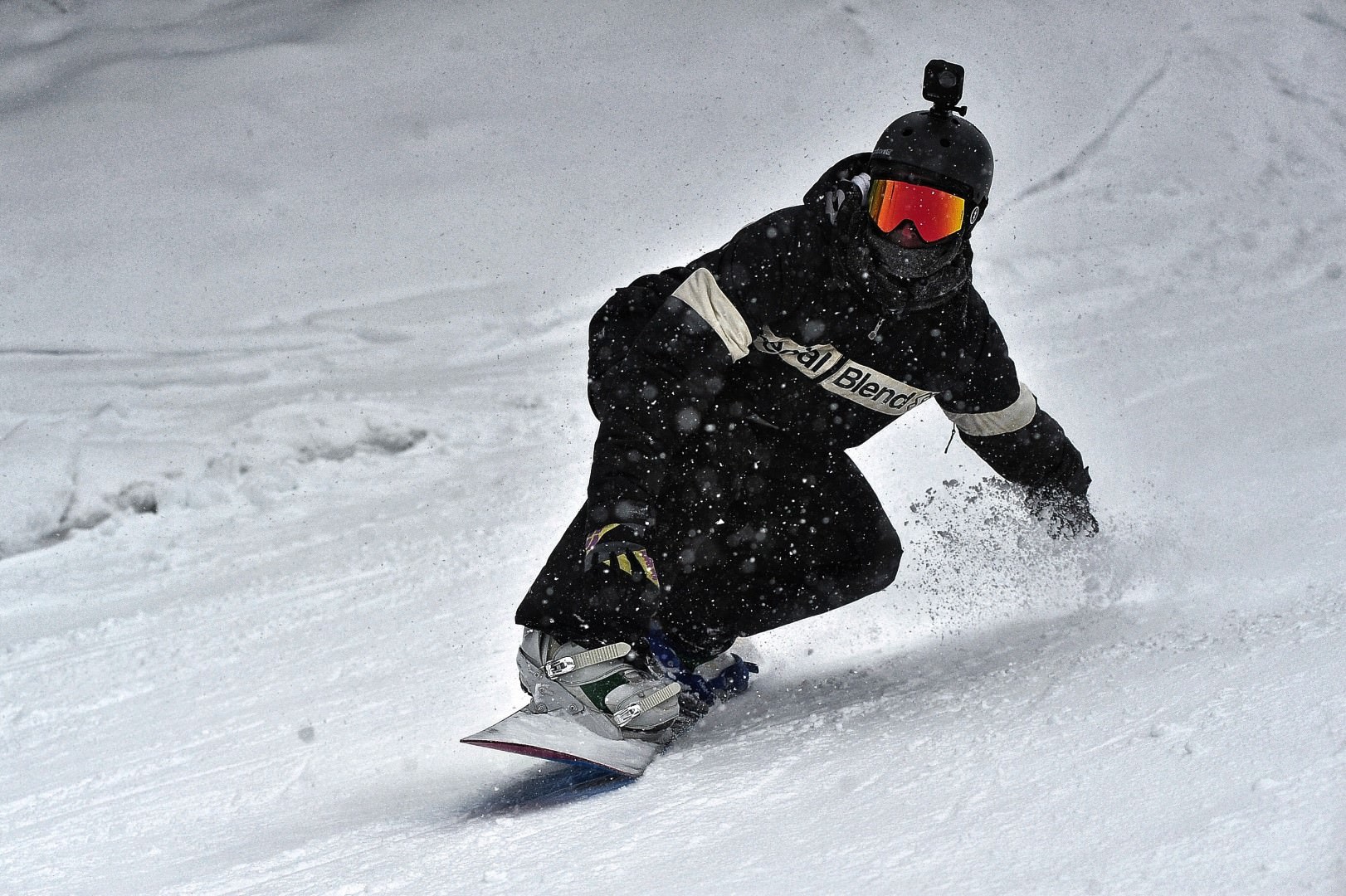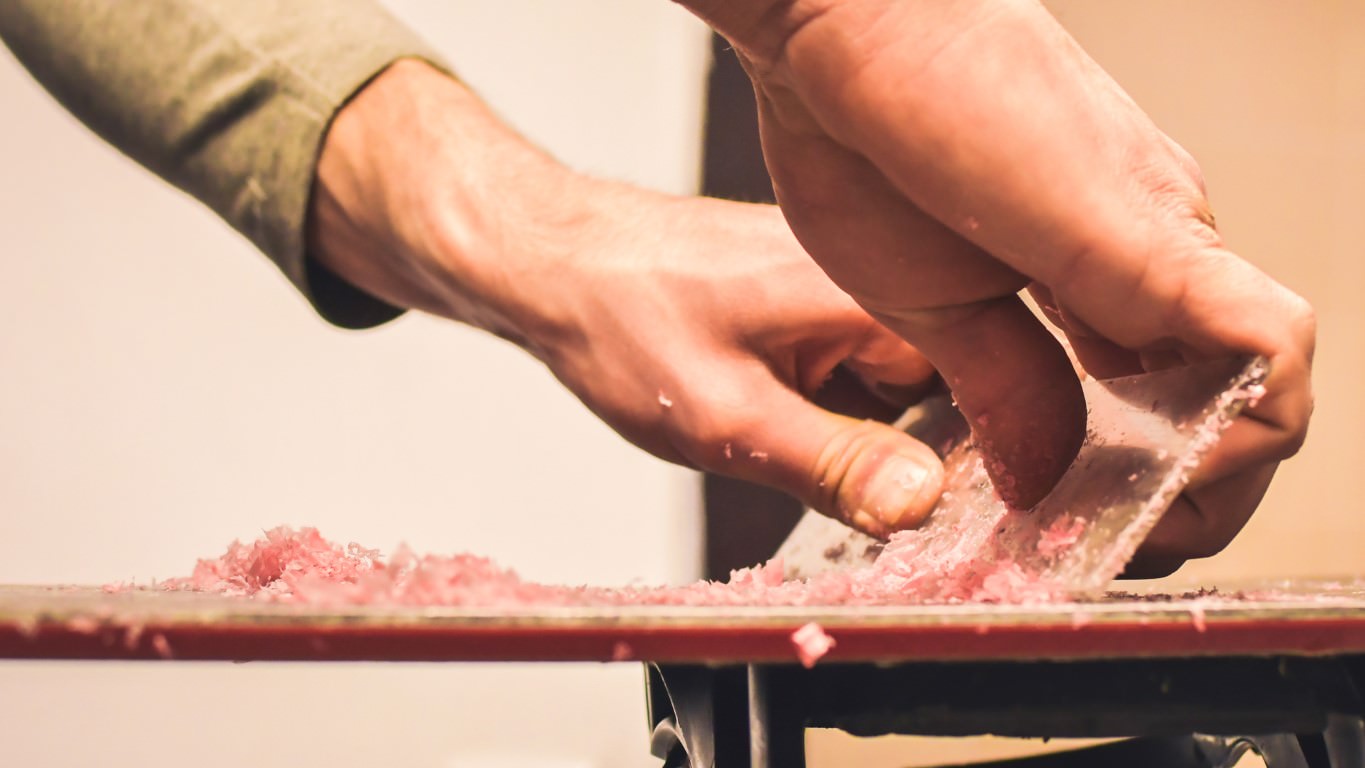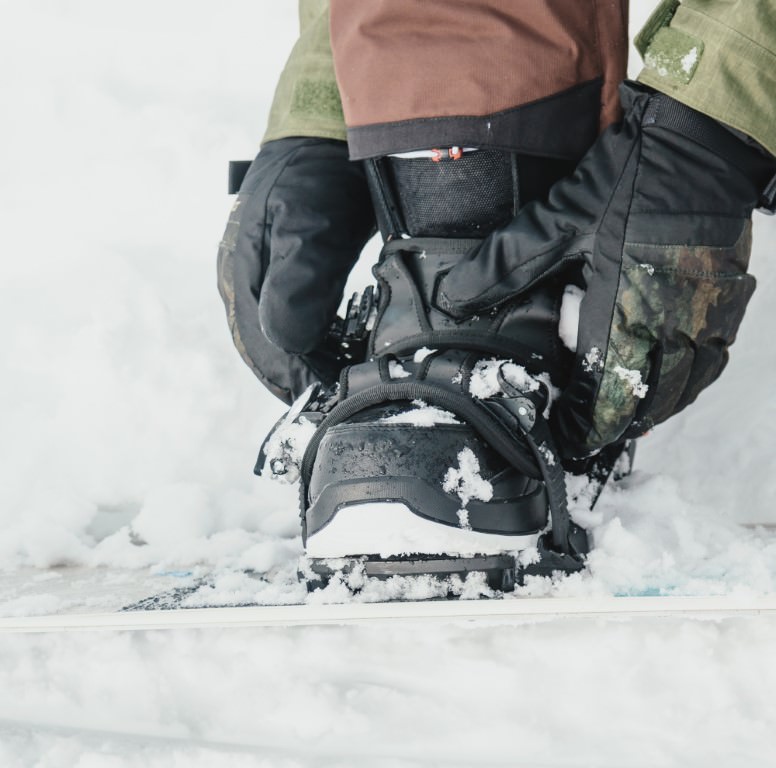What is a Regular Stance?
Welcome to the world of the ‘regulars’ – now we are not talking about a standing army, but left-foot-forward snowboarding warriors. Despite the name, ‘regular’ does not mean it’s the ‘standard’ or ‘normal’. It just happens to be the more common way to ride.
Essentially it is the left foot leading the way. This is because your rear foot should be your stronger one, and as most people are right footed it stands to reason more people ride left foot first.
What Is a Goofy Stance?
Flip the board around and say hello to the ‘goofy’ stance which accounts for around 25 to 40% of snowboarders. Here riders lead with their right foot forward. So if you’re inclined to put your right foot in front, then join the goofy gang.
In case you were wondering, it’s not named after a certain Disney character! The term goofy comes from surfing. It began in the sixties to describe right foot forward surfers and is used to mean ‘weird’ or ‘different’ – which is probably what Disney intended with the character’s name.
Determining Your Preferred Snowboarding Stance
For some people discovering their front foot can be an adventure in itself, while others instinctively know. Right handed doesn’t necessarily mean right footed. And being right footed doesn’t always mean that is your stronger leg – although for many it does.
So here are some simple yet effective strategies to help identify whether you’re a ‘regular’ or a ‘goofy’:
- The Skate Test: Riding a skateboard is a similar stance to a snowboard. So the foot you would use to push to speed up is your dominant rear foot. The same applies to surfing, wakeboarding or kitesurfing.
- The Race Test: Set up for a sprint race. When you are crouched and ready for the starter’s gun take a look at your front foot as this is the same as snowboarding. This is because you’ll want to push off using your dominant foot at the rear.
- The Push Test: Stand with your feet together, then have a friend gently push you from behind. The foot you instinctively step forward with is probably your lead foot.
- The Stair Test: Think about standing feet together at the bottom of some stairs. The foot you take the initial step with should be your front foot. This is because your dominant (rear) foot keeps you steady for balance.
- The Ball Kick Test: Imagine you’re taking a penalty in a soccer (as a Brit, I have to interject here and say ‘football’!) match. The foot you’d use to kick is likely your dominant foot which should be at the rear.
By the time you’ve skateboarded, sprinted, been pushed over, climbed some stairs and taken a penalty kick you should know whether you are regular or goofy. Just don’t blame us if now you’re too tired to snowboard!
The Impact of Your Snowboarding Stance on Your Riding Style
Whether you are regular or goofy makes no difference to how you ride, except that everything is opposite. A regular snowboarder leads with their left shoulder, while goofy leads with their right. This means that to turn left in a regular stance, you use the heelside, while on a goofy stance, you turn toeside.
The only time that your stance makes a big difference to snowboarding is when you are traversing a steep slope. This is usually when off-piste and trying to reach another part of the mountain. It is much easier to traverse on your toeside (facing up the slope) than on your heelside (facing down).
Being goofy or regular is also worth considering on chairlifts. Because a goofy sandwich means snowboards overlap, which is tricky for the snowboarder in the middle. It is generally easier for regular snowboarders to sit to the right of goofy snowboarders, so the front of the boards cross rather than the rear which is more awkward on a chairlift.
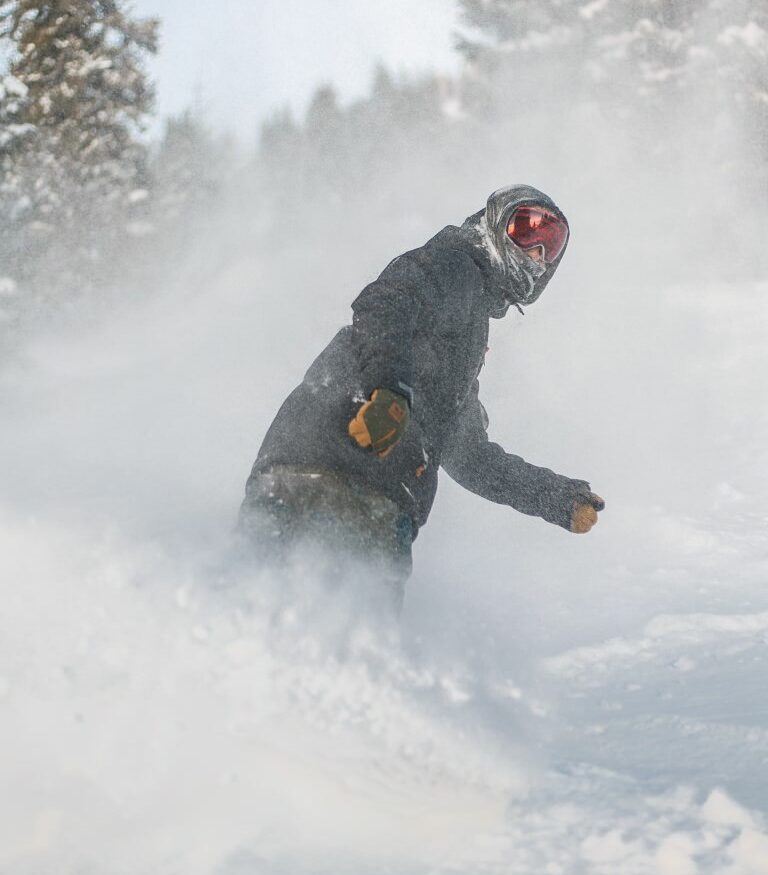
Can You Switch Between Regular and Goofy Stances?
Want to switch between regular and goofy? Absolutely – of course, you can! It’s called “riding switch” and it’s like being ambidextrous on the snow. It will feel a little awkward at first as you are essentially doing everything backwards – so a little like trying to write with your non-dominant hand.
For many people, it feels like you are a beginner again, but stick with it as practice makes perfect. Being able to ride switch unlocks many new tricks and riding styles. And if you persist it becomes second nature – I sometimes catch myself riding switch without ever consciously thinking about it!
Does Regular or Goofy Dictate the Equipment I Buy?
The short answer to this is “no”. The same board, bindings and boots work whether you are riding regular or switch, with the one exception of snowboards with asymmetric sidecuts (these are not that common).
To flit between the two, you just switch the bindings around to face the other way. However, you need to set your board up correctly. We’ve all reached the top of the first run and realized we’ve put the bindings on back to front.
On a true twin board, it does not matter which way around you set up your board. But if yours is directional, with a setback stance or a differently shaped nose and tail, it makes things rather awkward if you set up back to front!
Other Stance Considerations
There is a lot more to setting up your bindings than just whether you are regular or switch. Many snowboarders are a bit like Goldilocks and her porridge – their snowboard stance has to be ‘just right’. However, it is useful to learn how to ride with different stances as they help when trying different styles of snowboarding.
These are the other factors that create your stance.
- Stance Width: This is the gap between your feet. Wider gives you more stability, but narrower is more maneuverable. Your feet should be about shoulder width apart.
- Binding Angle: The angle of your bindings changes your foot and body position. Zero degrees is your boot pointing directly across the board, but most people have their feet pointing outwards. This is called a ‘duck’ stance, with angles commonly at between six and twenty one degrees. it’s popular with freestyle, all-mountain and beginner snowboarders. A forward stance means both feet are pointing towards the front, this is mainly used by freecarvers and racers. Having the front foot pointing forward and the rear between zero and six degrees is common with freeriders and big mountain snowboarders on very directional boards.
- Setback: The setback is all about where your bindings sit on the board in relation to the middle. Moving them back can give you a longer nose, which helps to keep the tip above the snow in powder. A setback stance also helps with turn initiation if you are a backfoot driver, but this is a bad habit to avoid.
Conclusion: Perfecting Your Snowboarding Stance
While being regular or goofy is set in stone, finding your perfect snowboarding stance is an ever changing process. Whether you’re a regular rider or a goofy guru, as your board, riding style and age change, so will your setup.
Tweaking your stance can revolutionize your ride, so while you may have found your groove, a bit of experimentation will sometimes help you find an even groovier setup.
